It takes a special set of skills to master the art of antiquing—skills that are cultivated by research, practice in the field, patience, and training your eye to recognize quality. In other words, it takes time to learn the ropes, and even experts are always looking to expand their knowledge.
To help you become the most informed connoisseur you can be, we hit up our expert vintage buyers for tips on spotting the best furniture, rugs, art, silver, and more (if you haven’t already read it, find part one of our antiquing guide here). Read on for their advice by category—and don’t forget to bookmark this page to reference next time you hit the shops and shows!
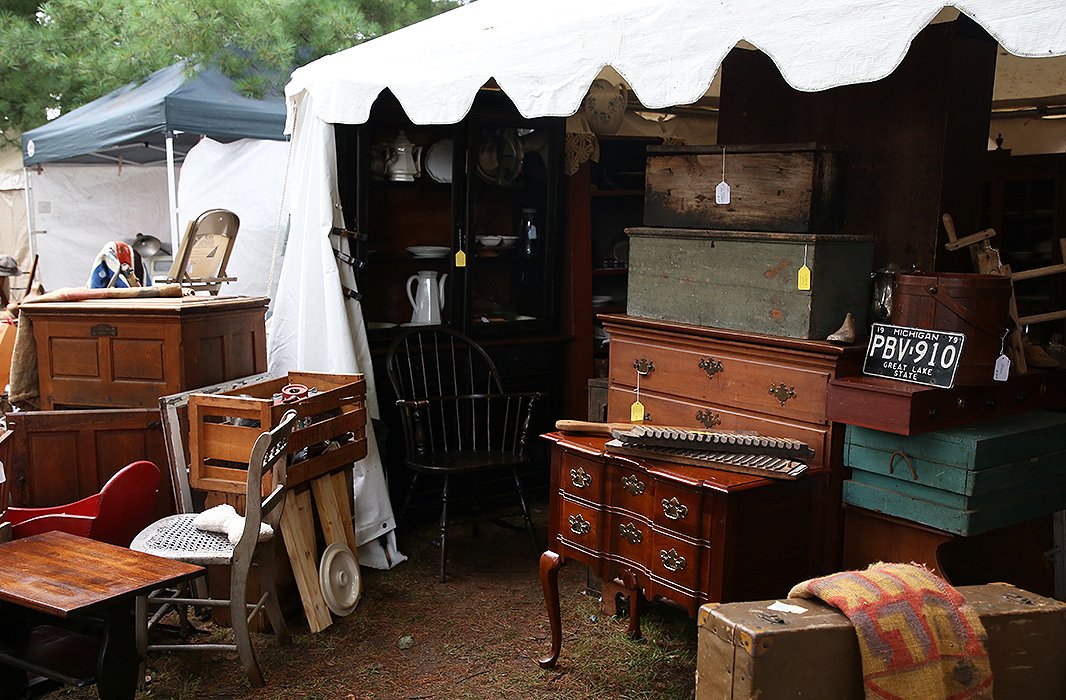

Wood Furniture
Trust your gut. If it looks new, it most likely is. Pay close attention to the nails: Newer, shinier nails indicate newer construction.
Look for dovetails. The presence of dovetail joints, which hold wood furnishings together without the use of nails or other hardware, is a sign that a piece was made by a cabinetmaker as opposed to being mass-produced or factory-made. Generally, the thinner the dovetail, the more skilled the cabinetmaker (and the higher the quality of the piece).
Inspect the hardware. Be sure to get a good look at drawer pulls and any other hardware. For pulls, the inside of the drawer should reveal a post-and-nut construction if it’s truly vintage. Look for dirt, dust, and wear around the pulls too; these are signs that the hardware is original to the piece.
Rethink shine and polish. A refinished piece might look clean and shiny, but updating wood furniture in this way can diminish its value, as collectors often prefer the original, more weathered finish of a piece. That being said, beauty is in the eye of the beholder, and it’s up to you which look you prefer.
Get a little dirty. You might need to get on your hands and knees to truly assess the state of an item. Flip pieces over, crawl underneath tables, and open drawers to find stamps, labels, signatures, or other markings that might give context to what you’re looking at.
Shop vintage furniture →
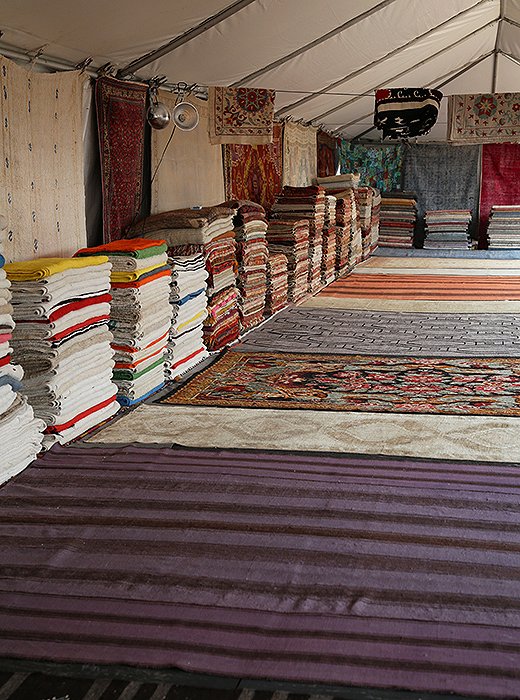
Rugs
Look at the knots. Origin, style, dye technique: A lot of factors can affect the price of a vintage rug. One feature that can help you determine quality without the help or knowledge of an expert is knot count. In most cases, a tighter knot—meaning more knots per square inch—translates to higher quality (and by extension, price). Flip a rug over and check the back to get a clear picture of its knotting.
Check for fraying. As a rule, steer clear of untied edges and excessive fraying. Handmade rugs are woven, so it’s likely that once a loose end exists, it’s only a matter of time before the entire thing unravels.
… But don’t be afraid of imperfections. Unless it’s been locked up in storage for years, a vintage rug is unlikely to be in perfect condition. Think of uneven piling, discoloration, or slight wear and tear as beauty marks that only add to the charm and history of a piece.
Have a function in mind. Where are you planning on putting the rug? If you’re placing it in a busier space, be sure it feels sturdy enough to stand up to foot traffic.
Give it a wash. Don’t walk away from a rug just because it has that dusty antique smell (remember, the fibers are at least decades old!). A professional cleaning will make it feel new again, and airing it outside once a year after that will keep it fresh.
Shop vintage rugs →
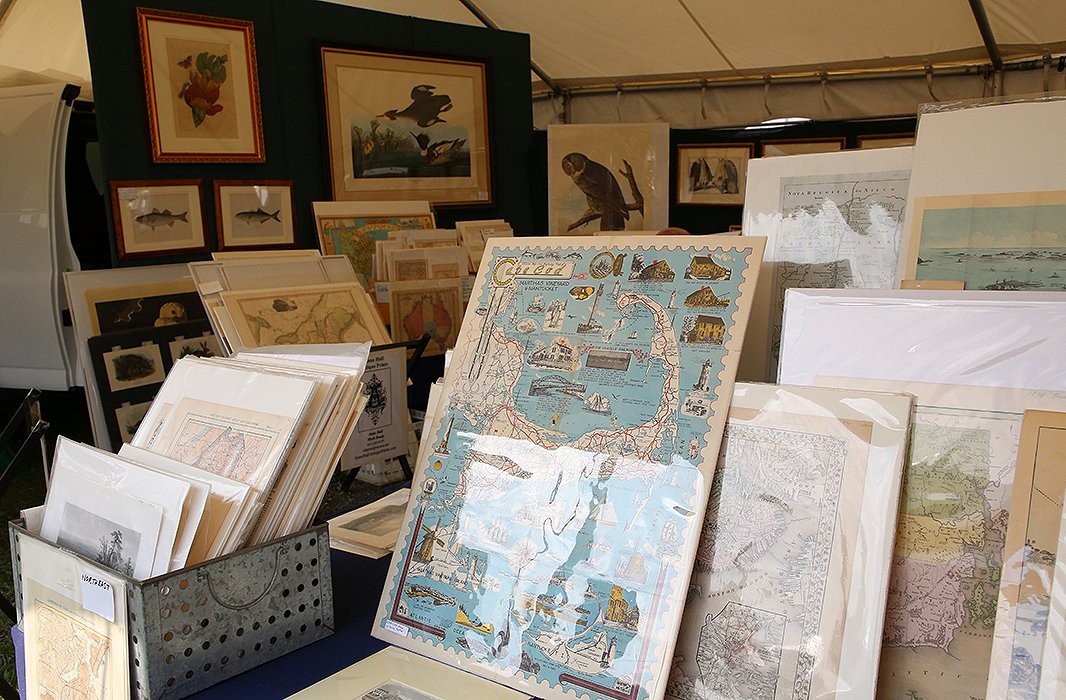
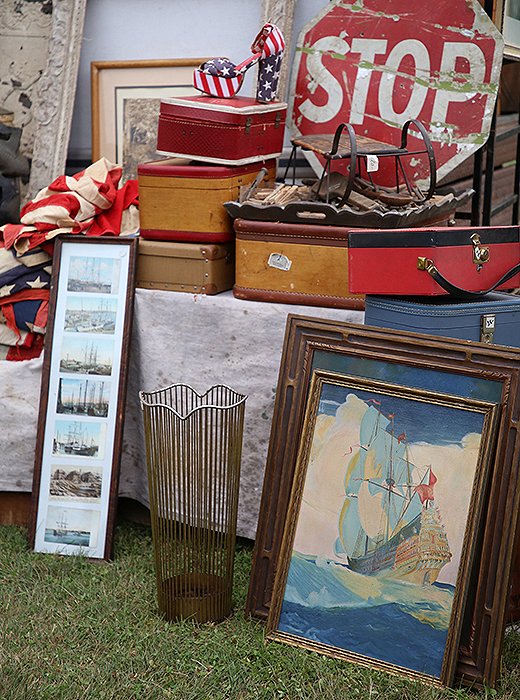
Art
Discern paintings from prints. Print reproductions are made with tiny dots (very tiny, so get up close!) meant to mimic the painterly brushstrokes of original artwork. This isn’t to say prints aren’t worth buying, but it’s good to know what you’re getting to avoid overpaying.
Seek out craquelure. The web of fine cracks that appears on the surface of aged paintings is called craquelure. Trust us when we say it’s something you want and not in any way indicative of poor condition; craquelure denotes authenticity and is highly sought after by art collectors. (Next time you visit an art museum, take a close look at an old painting and you’ll likely see the subtle cracks.)
Check out the frames and nails. The quality, condition, and appearance of a work’s framing can help to date the piece. So take a look at the back of the work: If the wood of the frame is dark or stained, it’s likely been around for some time. For gold-tone frames, the darker and more bronze-looking the gold is, the older the piece is likely to be. You’ll often find framer labels on the back of artworks, and a quick online search might help narrow down an age range.
Look for artworks—or frames—by themselves. While it’s certainly convenient to buy ready-to-hang artwork, some of the best deals can be found on unframed artworks or empty frames.
Ask for provenance. If you’re paying a lot for a piece, be sure to get as much information from the dealer as possible, such as where it’s from and how old it might be. If there are documents that accompany the work, even better.
Shop vintage art →
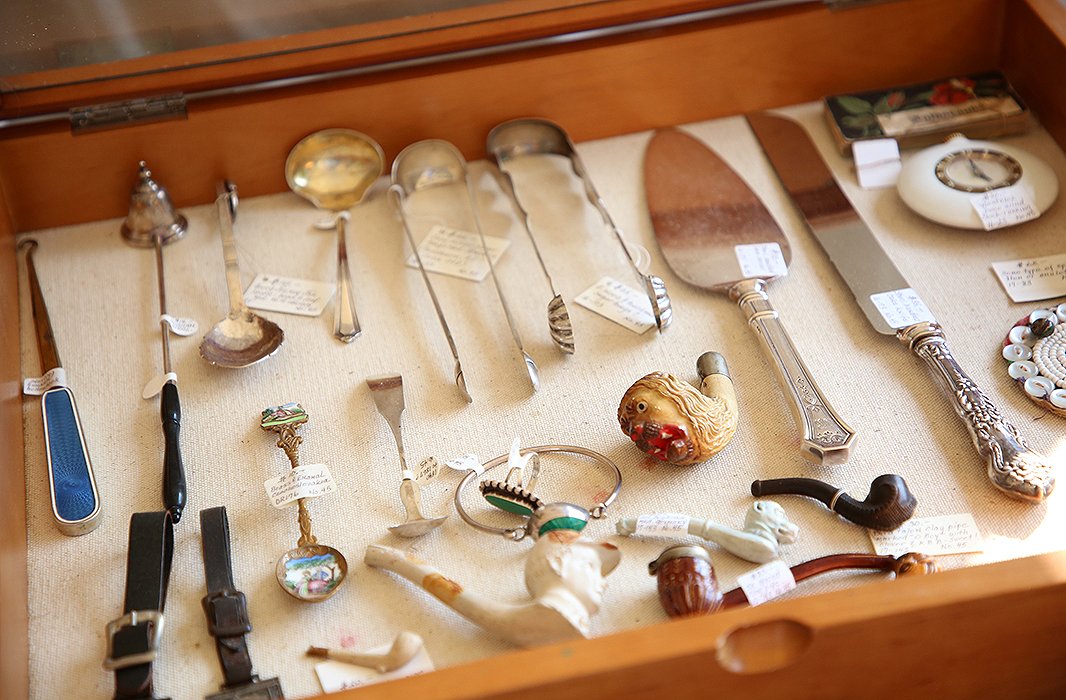
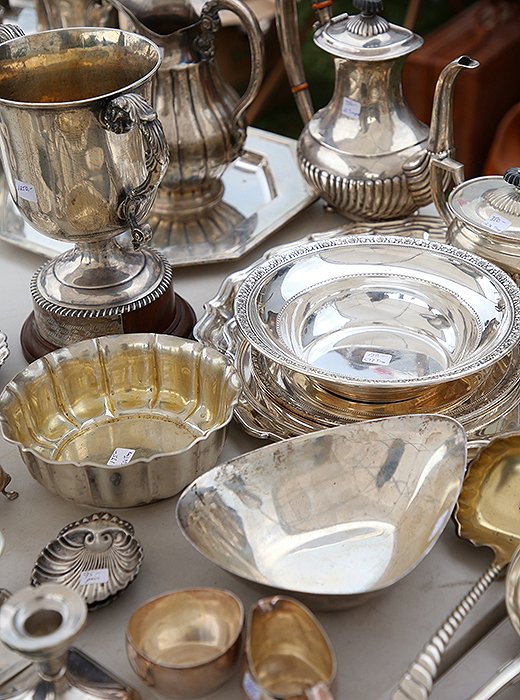
Silver
Know the difference between silver plate and sterling silver. There’s nothing wrong with silver plate—it’s a wonderful way to bring home the elegant look of silver without the high price tag. But what exactly makes sterling more superior? For one, it holds its value, retaining a high resale price no matter its age, whereas silver plate does not. It also really stands up to the test of time: Sterling can last hundreds of years if properly taken care of.
Bring a magnet. You can easily tell if a piece is sterling with this simple trick. Hold a small magnet up to the design. If the magnet adheres, then the piece is not sterling and is likely plated silver or something else. A magnet will not be attracted to true sterling silver.
Check the marks. Both silver-plate and sterling-silver pieces will bear multiple marks of some kind. American sterling is typically marked with “925,” meaning the piece is made of 92.5% silver and 7.5% of another type of metal. English sterling traditionally features a lion marking along with several other marks that indicate the city of origin, the monarch in power at the time of its creation, and the year it was made.
Be aware of the market price. The value of silver is determined by the current market rate, meaning the price often rises and falls. Keep this in mind as you shop—and if you’re lucky, you might be able to use it as a bargaining tool.
Shop vintage silver →
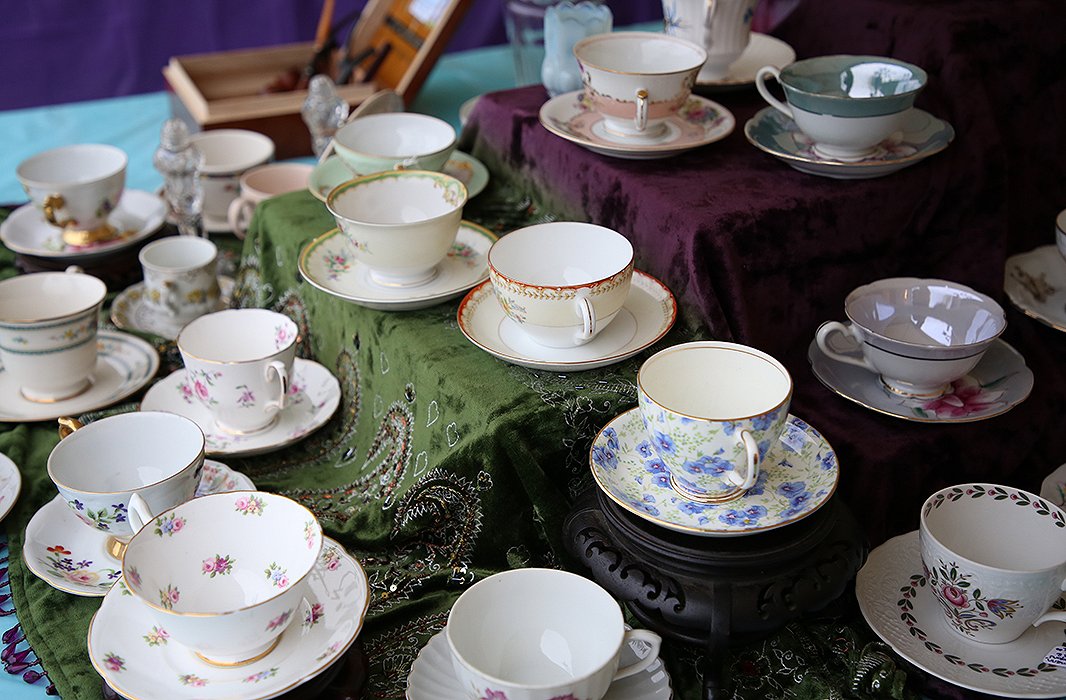
Porcelain and Ceramics
Conduct the light test. To ascertain whether a design is true porcelain, take out your phone, hold it up to the piece, and see if the light shines through. If it does, then the piece is porcelain. If it doesn’t, the item is likely stoneware or earthenware.
Discern transferware from hand-painted pieces. Take a close look at the edges of a piece. If the pattern is cut off at the lip of a dish, then it’s likely transferware, which means the design was printed onto the piece and not hand-painted. Designs done by hand will have a fuller, more fluid pattern, complete with brushstroke details and minor imperfections.
Look for marks. Symbols on the underside of a piece can help you determine when a piece was made. Hand-painted marks on ceramics suggest an 18th-century origin or earlier, while impressed or printed marks denote a more recent date.
Shop vintage tableware →

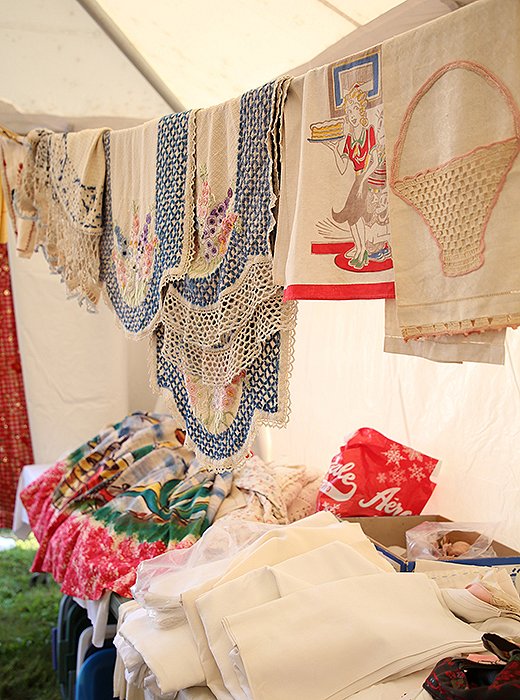
Textiles
Inspect every inch. Textiles are often folded up at antiques markets. Make sure to open them up and inspect every inch so that you’re not surprised to find damage when you get home.
Find human error. As with most other things vintage, a little imperfection in a textile can be a good thing. Look for details such as uneven stitching, which means a piece was made by hand and not by a machine.
Look at the back. Flipping a piece of fabric over can be a great indicator of its quality and age. Synthetic or new fabrics likely have a solid-color back (like white), while older, more authentic designs will show color and pattern on both sides.
Assess the damage. Remember that wear from age isn’t always bad—a little tattering or fraying adds character. We recommend drawing the line when it comes to things like stains or damage from insects or pets.
Stay away from bulk. If a vendor has a large stock of a certain fabric, it’s likely not very old, so avoid it if you’re looking for something with real history. (On the other hand, if you love it, then buy it!).
Shop vintage textiles →

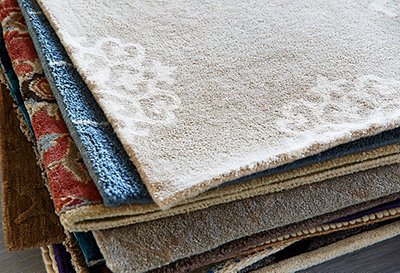
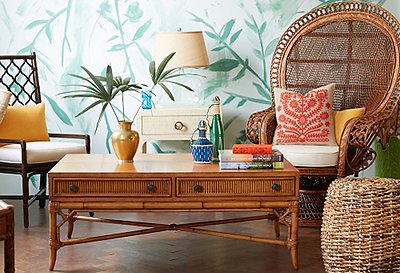

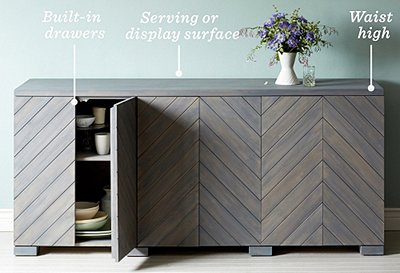

Join the Discussion